Queer Rewilding: Zachari Logan’s Body as Land, Land as Body
“It's true we cannot all draw the same way; but what a boring world that would be?”
Fur turns to foliage, flesh dissolves into earth, and soil becomes the body. With grace and conviction, every work of Zachari Logan makes a clear point: we are nature - not outside of it looking in.
drawing pöx: In our earlier exchange about your drawing Wildman’s Bouquet, you spoke about reimagining Wildman and Wildwoman - mystical figures from medieval European storytelling - as outsiders who embody land and queerness. What draws you to them? And how does exploring these archetypes through self-portraiture help you visualize the concept of queer rewilding?
Zachari Logan: I often respond to, reference, and re-evaluate art historical sources as a catalyst for ideas about contemporary representations of the body and self-portraiture. My first encounter with the Wild Man, Wildermann or Woodwose was in Vienna, during a residency back in 2012. The Albertina collection, home to the largest collection of works on paper in the world, allows many pieces to be researched firsthand. I was fortunate enough to spend considerable time looking at Martin Schongauer’s fabulous etchings of Wildmen, Wildwomen, and several family crests that incorporate the Wildman’s image.
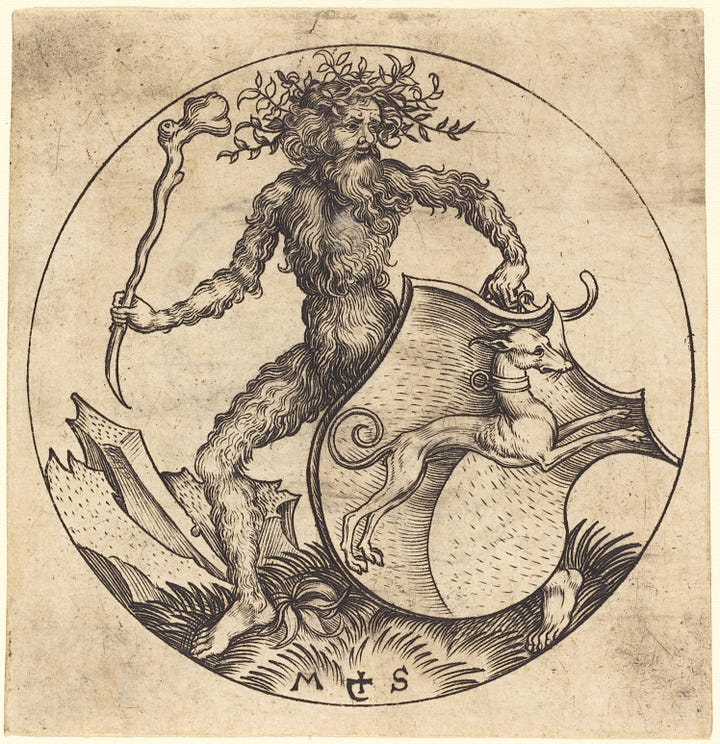
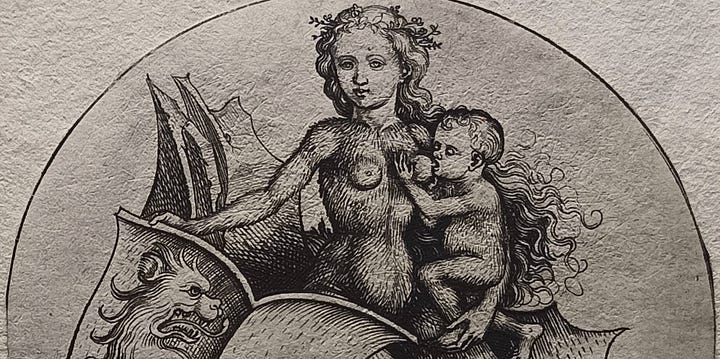
Schongauer’s treatment of their bodies is playfully gestural. The furriness is luxuriant and sensual. What struck me visually - and still interests me in regard to the Wildman - is texture.
The Wildermann’s bodies, visually othered by their nudity and their place in the forest, are simultaneously made fabulous (queer) by the intense furriness of their bodies. This visual inversion was relevant to my own desire to rewild or transform my own image.
The first works in this series were not primarily based on Schongauer’s depictions but on those of Giuseppe Arcimboldo. While in Vienna, I was concurrently researching the Italian painter’s work in Vienna's Kunsthistorisches Museum. Arcimboldo's fantastical portraits of Hapsburg royalty as conglomerations of flora, fauna, and inanimate objects felt very contemporary and relevant to my desire to reshape or rewild my own body – formally and texturally. These initial drawings were silhouetted portraits mixing both flora and fauna. The furriness in my renderings became textured landscape; landscape in turn became body.
Several years later, I focused on works that directly referenced Schongauer’s, in a series titled Tales From the Bone Garden, of which Wildman’s Bouquet is a part.
dp: In your drawing, land and body intertwine, weaving each other in a ceaseless cycle. Fur becomes foliage, flesh becomes earth, and the body returns - to morph again into a landscape.
To describe this metamorphosis, you’ve cultivated a rich and intricate visual vocabulary of flora and fauna. In a world with 390,000 plant species, how do you curate which ones will tell your story on paper?
ZL: Initially, this curation - or cultivation, if you will - has been linked to my physical experience of flora. Simply through the act of observation: by both photographing and drawing flowers wherever I am in the world - at home in Saskatchewan or abroad. Sources mined empirically by my presence: seeing and then describing them through the flash of the camera, sketching, and, in some cases, collecting.
Within my ongoing series of monumental pastel drawings, the Eunuch Tapestries (which refer to the famed Unicorn Tapestries in the Met Cloisters), I began to visualize my catalogue of plant observations within single compositions. Literally hundreds of collected flora and fauna (mostly photographic) were composed within nocturnal scenes that span anywhere between 5 and 25 feet. I mix these plants freely, creating a landscape that could not possibly exist, but as a mindscape.
These works are composed similarly to that of a Dutch still-life painter who would entwine flowers that would have never bloomed at the same time - so in other words, naturalistically, but entirely fictive. Within these compositions, I also utilize my memory of collected forms - so drawing from recollection to create hybrids that represent, similarly to one's mind, the way memories shift and are reformed by time and experience.
The pictorial space in these works is a fusion of two styles - somewhat like that of a medieval mille-fleur tapestry, where space is slightly abstracted or flattened by patterning of foliage, alongside the black vacuum of Baroque painting. The space becomes in-between or liminal space - not entirely flat or deep.
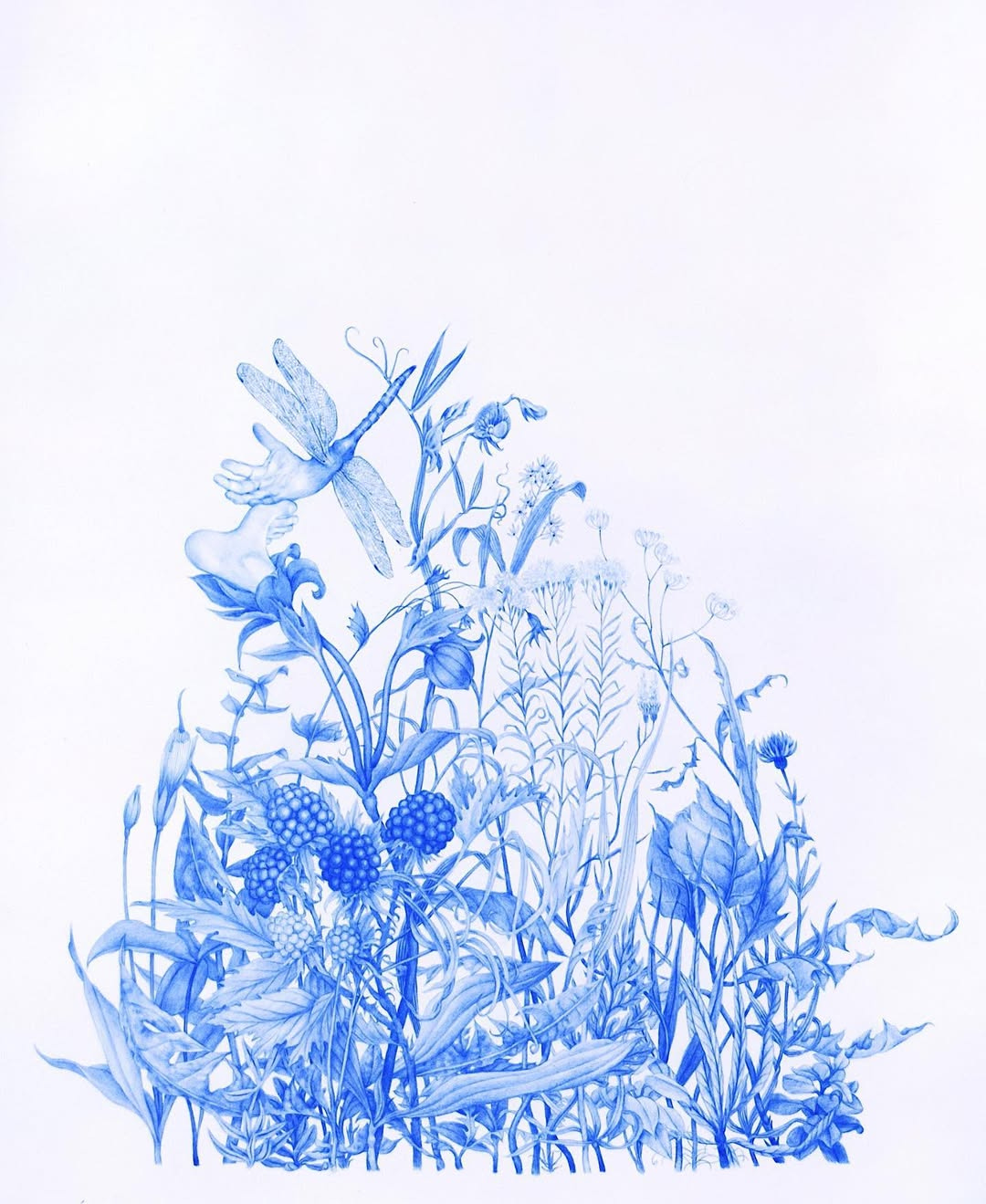
Primarily, the space I create in these compositions feature a reimagining of roadside ditches and rural areas - very common in my Canadian province of Saskatchewan - which are filled with what are referred to as weeds. In other words, undesirable plant life - eradicated by farming, at best pushed to the margins.
These particular types of botanicals have become incredibly important to my construction of narrative and my conceptual interests, focusing on the way we as a society refer to sexual minorities and essentially to anyone othered by a majority. It is very similar to the language used to talk about weeds. Why is a weed a weed? It is deemed so because it has no purpose for human consumption, but it still has a desire to thrive and a purpose outside the monocultured crop.
dp: You make a critical point. Today, we are seeing a political and public backlash against diversity. Otherization is growing. Identity is weaponized. Marginalized groups are scapegoated. How do you counter this? What do you hope a viewer does - having seen your work - to become an ally?
ZL: Ultimately, I hope to plant a seed for the viewer, so to speak. I'd like to create a sense of awareness in the viewer of how entwined our continued existence is to how we treat one another - and by that, I mean all people, but also all beings, the earth. So, there are ecological concerns adjacent to ideas about being othered - or marginalized, that I'm engaging within this series, and within all of my work.
What we do to the world and one another, we do to ourselves. Ultimately, land is body. I'm interested in slowing down the viewer and proposing that they contemplate an enchantment with the world. I feel a huge issue with our society is a disenchantment often fostered by political and religious ideologies, which are quickly disseminated by our technologies - be that our phones, streaming services or other conveniences.
We participate in a collective dread over the state of our planet (or continue to turn a blind eye), which in turn alienates us further from the notion that we are nature - not outside of it looking in. I think this fundamental detachment is our predicament - and I wish to dispel it.
dp: Reconnecting us to land, to others, to ourselves - is no small task. Why drawing as a tool of choice?
ZL: Every person has had some experience with the act of drawing, whether it be a map, stick man, or a 'connect the dots' exercise. Drawing is closely linked to bodies - the bodies of viewers and of the creator. This universal is important. It helps connect the viewer to the materials, to the act of creation.
It is true we cannot all draw the same way; but what a boring world that would be? It's not about level of skill. It's about that fundamental connection through doing.
Secondly for me, it’s the immediacy of process. There is an intimate physicality which is intellectually important. The way in which I draw, particularly when using pastel, involves no separation between my hands, my mind, and my materials. I'll often get to a point when working on a drawing, that my fingertips begin to bleed and need to callus over, becoming an even better applicator. This closeness between creation/ body/mind is paramount.
I also link my installation of monumental works on paper to the vulnerability of the materials used. The ways in which I display my larger drawings are always exposed with pins, referring to mortality, temporality - back to myself and the viewer.
Zachari Logan works mainly with drawing, ceramics and installation practices, exploring intersections between identity, memory and place. Employing a strategy of visual quotation, mined from place and experience, Logan re-wilds his body as a queer embodiment of land. He engages ideas of beauty, mortality, empirical explorations of landscape, and overlapping art-historic motifs that underline a fundamental interconnection of human as nature. Logan has exhibited throughout North America, Europe and Asia and is found in collections worldwide, including National Gallery of Canada, Art Gallery of Ontario, Remai Modern, McMichael Collection, Peabody Essex Museum, Leslie-Lohman, Nerman MOCA, 21cMuseum Collection and Thetis Foundation, among others.





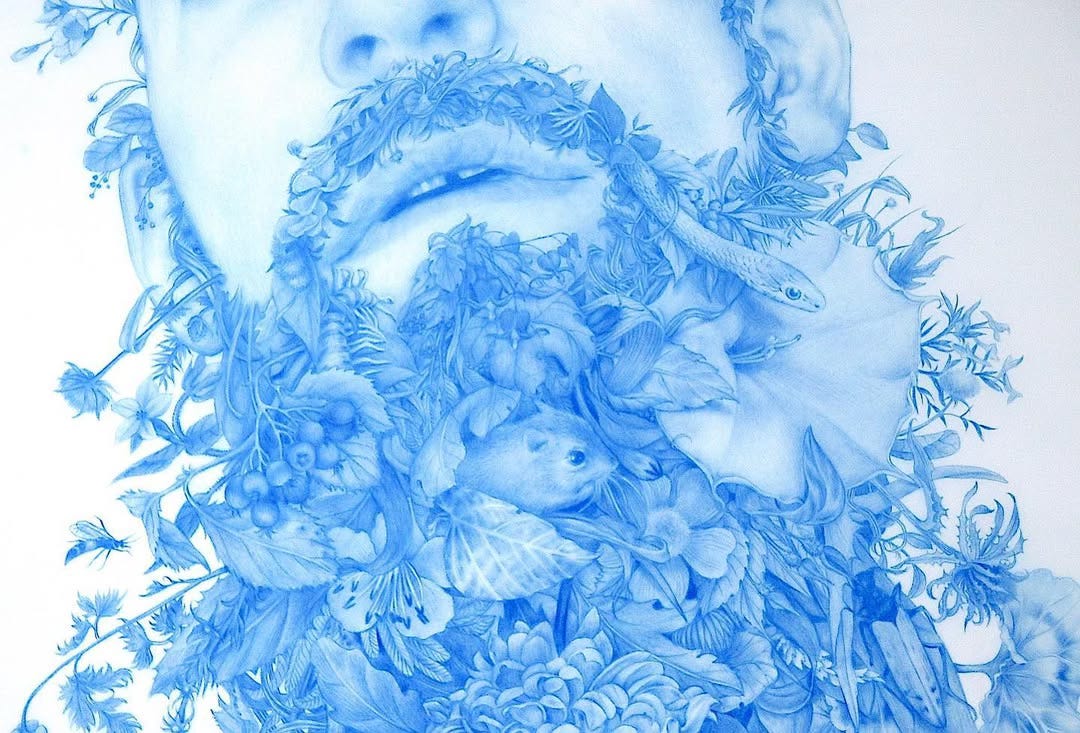
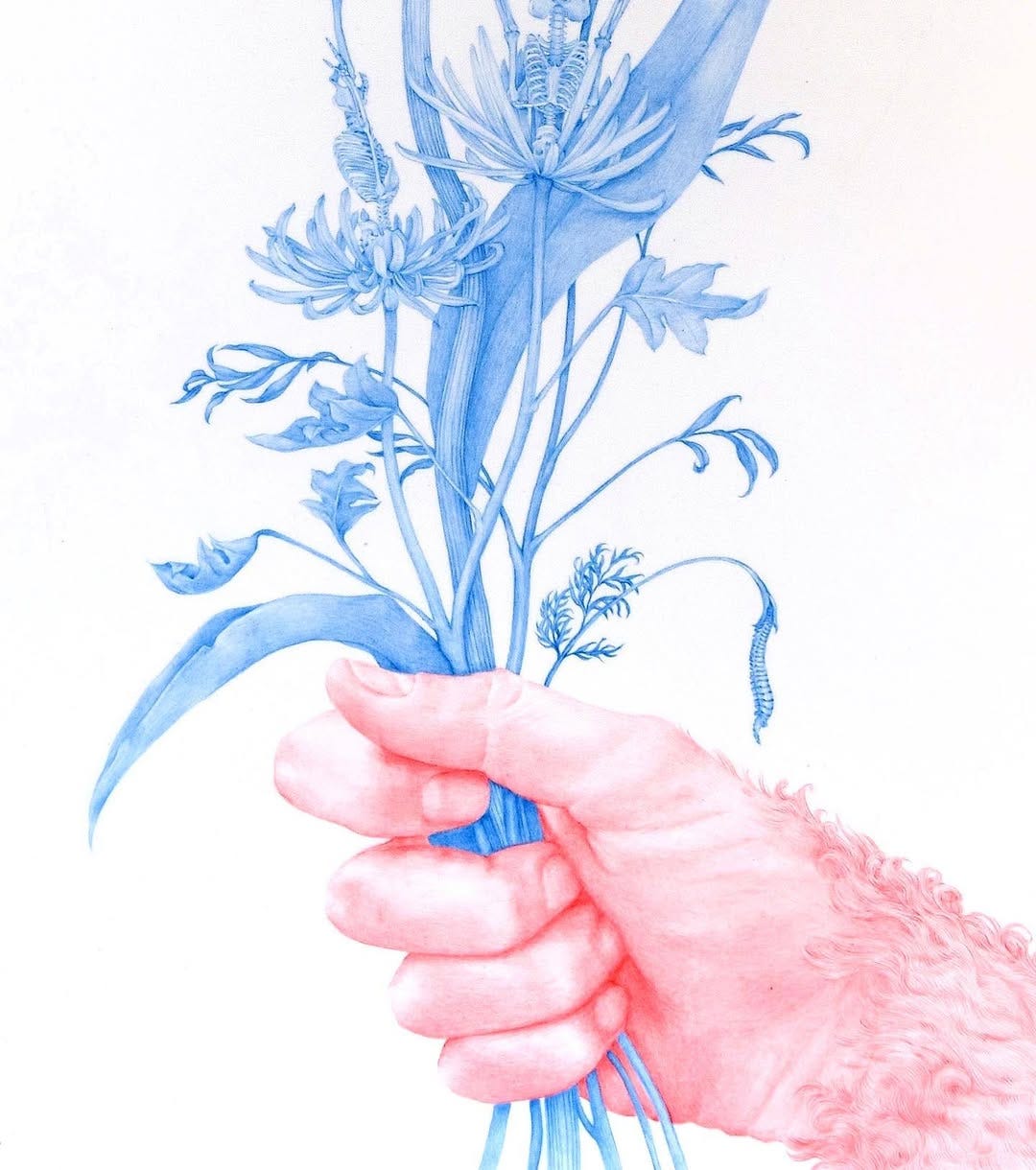
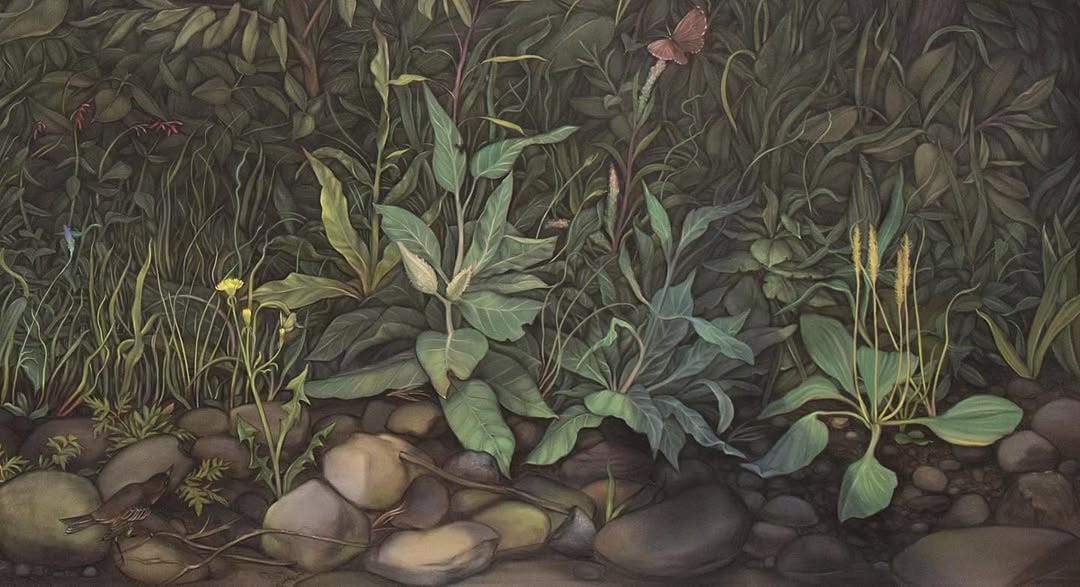
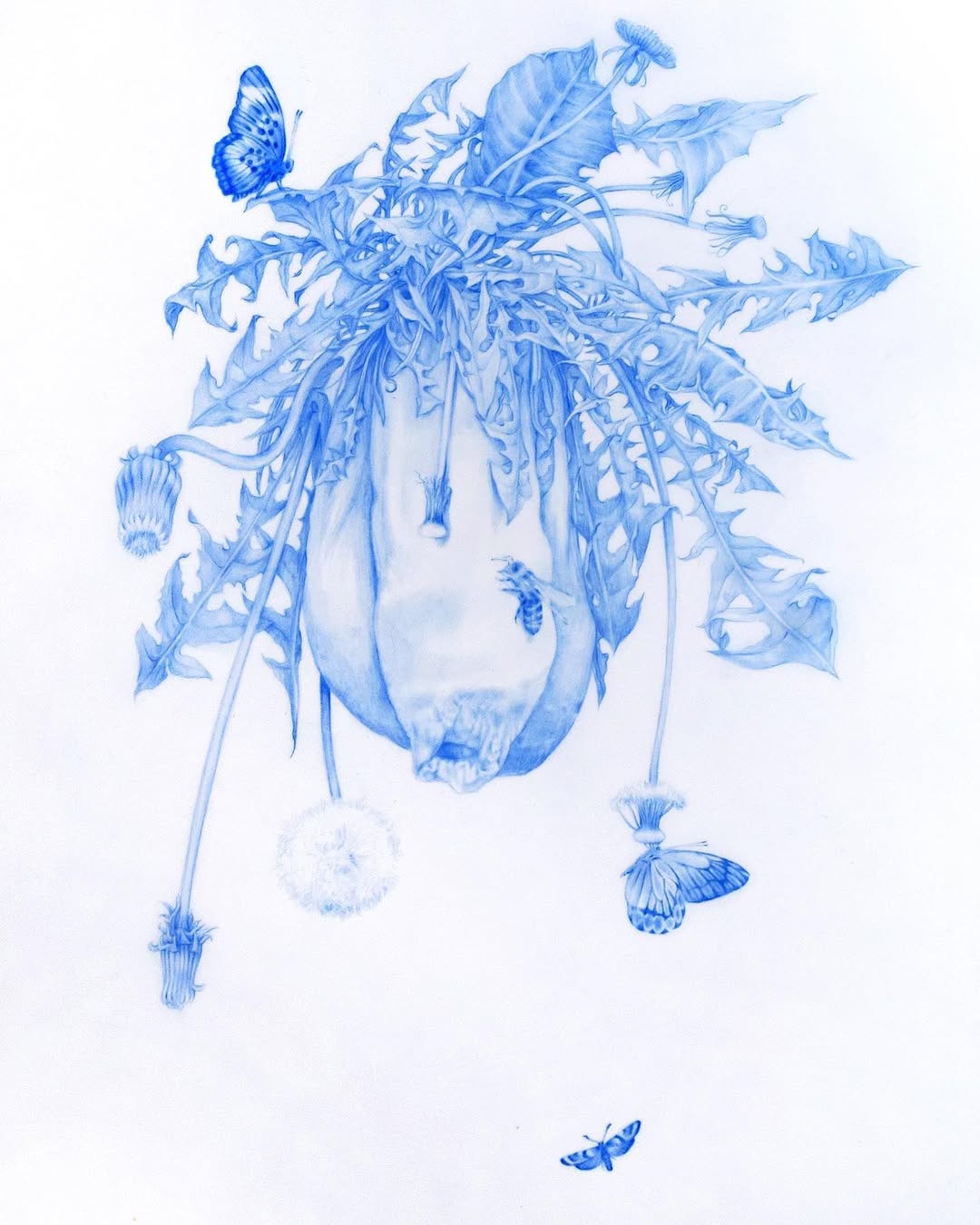
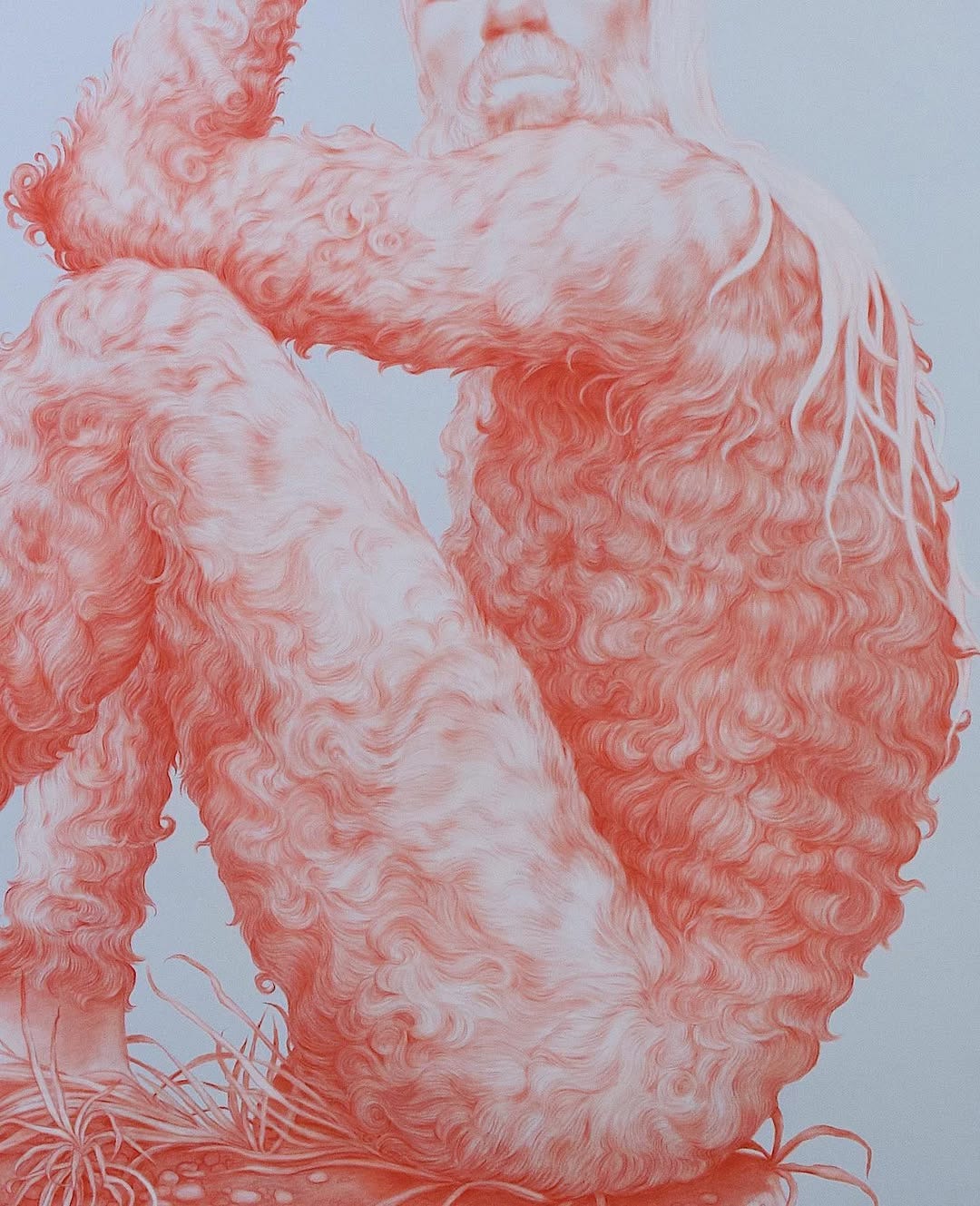
Thank you for sharing. Zachari's drawings & ceramics are beautiful!